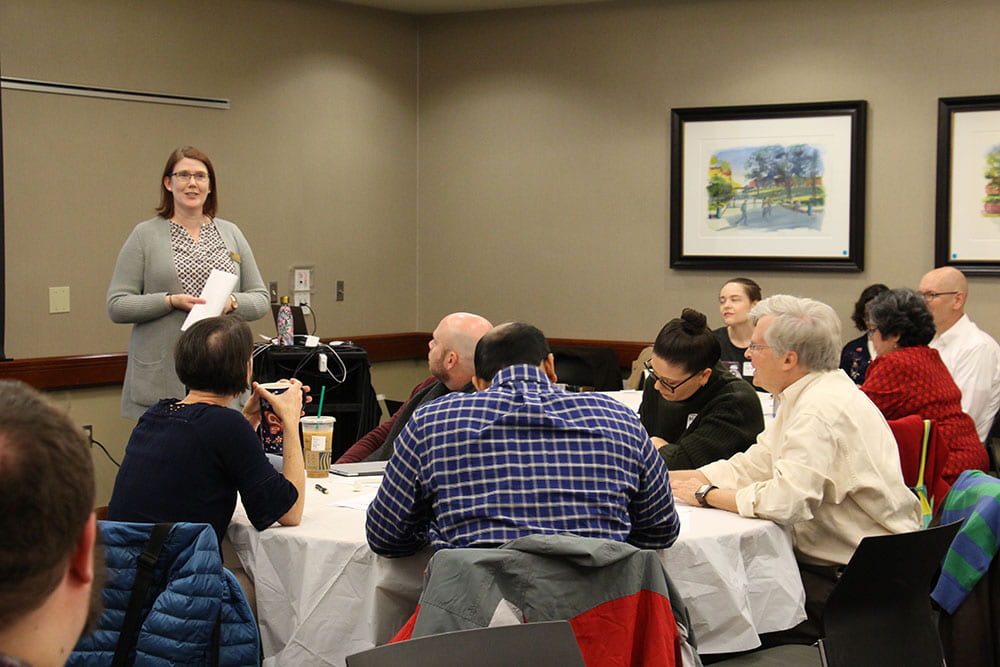How Might We…

You’ve probably heard about and used the design thinking process many times. Design thinking is a common approach in many disciplines on campus; in fact, it originated in design professions. The iterative cycle of empathize, define, ideate, prototype and test is quite popular right now, popping up in all kinds of professional media (graphic attribution).
 While we often think of design thinking the problem-framing and problem-solving approach that it is, we can also use this approach to think about our teaching, as well. A design-thinking mindset encourages both divergent and convergent thinking, to not go into a situation with a bias about what is really happening or to assume your first idea for addressing the problem is the best approach. Teaching can often feel like this – we may think we know what’s happening with our students in our classes, but do we? Or are we making assumptions without actually investigating the situation from multiple angles and with the people affected by it – students – before we move forward with our (possible) solution?
While we often think of design thinking the problem-framing and problem-solving approach that it is, we can also use this approach to think about our teaching, as well. A design-thinking mindset encourages both divergent and convergent thinking, to not go into a situation with a bias about what is really happening or to assume your first idea for addressing the problem is the best approach. Teaching can often feel like this – we may think we know what’s happening with our students in our classes, but do we? Or are we making assumptions without actually investigating the situation from multiple angles and with the people affected by it – students – before we move forward with our (possible) solution?
The Google Ventures Sprint model is one model that maps well onto teaching and learning development projects. This model is a regimented approach tightly timed to be completed in one work week. Faculty don’t often have the luxury to spend this much time in groups working through the full model, except perhaps in the summer, but several of the tools discussed can be easily adapted for faculty purposes.
For example, consider “how might we…” questions. How might we… questions are a way to turn an insight or idea into a question that spurs the ideation phase of the design process. This handout from the d.school at Stanford explains types of HMW questions that make effective “seeds” for your ideation, including questions that amp up the good, remove the bad, and question an assumption.
 At our January 2020 Georgia Tech Retreat on Exploring Effective Teaching (GTREET) we used the following HMW question to guide our time together:
At our January 2020 Georgia Tech Retreat on Exploring Effective Teaching (GTREET) we used the following HMW question to guide our time together:
“How might we move beyond unhelpful traditional educational structures to build a culture of challenge meaningful experience and academic wellbeing for Georgia Tech students?”
We chose this question because it was the way to think about two of the major issues that we’ve already been talking about in CTL and with other faculty members: grading practices and academic wellbeing. Those are the subjects of our first and second Teaching and Learning Buzz podcast episodes. The question was also broad enough that it gave our participants room to play and think about the way we and our students “do” school in general. Using that guiding question, we did a variety of open-end activities that helped participants rethink some of the traditional teaching practices they use and leave with some concrete things to try in their own classes.
How might you answer our HMW question? We encourage you to chat with some colleagues to see what they think, as well. And check out the next episode of the Teaching & Learning Buzz podcast next week, when we speak with our GTREET speaker, Notre Dame’s Dr. Susan Blum, author of I Love Learning, I Hate School: An Anthropology of College,




